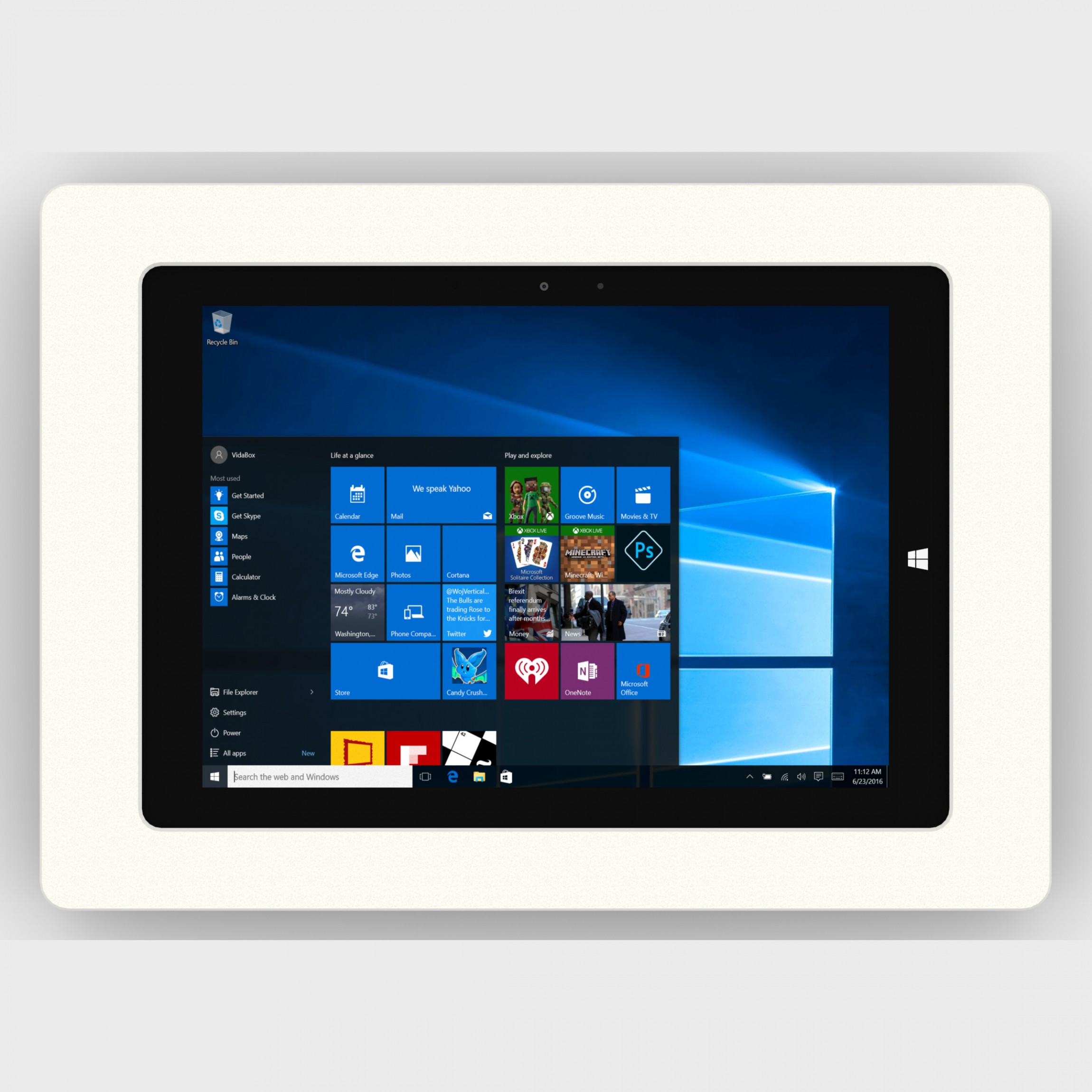

- #Surface go convert to windows 10 .exe
- #Surface go convert to windows 10 install
- #Surface go convert to windows 10 update
- #Surface go convert to windows 10 upgrade
- #Surface go convert to windows 10 windows 10
Windows will now boot into the initial post-install setup. When the setup prompts you to reboot, let it. Go through the setup like you normally would. #Surface go convert to windows 10 install
Option 2: Use the installer to clean install Windows 11
#Surface go convert to windows 10 upgrade
Once the upgrade process is complete (it will take a while), you’ll have Windows 11 running.Windows will guide you through upgrading.
#Surface go convert to windows 10 .exe
exe extension shown depending on your settings).
Double-click the setup.exe file (there may not be an. Open the USB Drive in the File Explorer. Option 1: Use the installer to upgrade to Windows 11  That command will take a while (and use a lot of CPU), but eventually you’ll have an ESD that you can copy to your USB drive. Finally, replace INDEX with the index you chose above. Do the same for the DestinationImageFile path. Remember to replace the SourceImageFile path with the actual path to your install.wim. Next, run dism /Export-Image /SourceImageFile:E:\Downloads\OSes\install.wim /SourceIndex:INDEX /DestinationImageFile:E:\Downloads\OSes\install.esd /Compress:recovery /CheckIntegrity. Choose the edition you want and remember its index. This will give you a list of editions contained in the WIM, each with its own index.
That command will take a while (and use a lot of CPU), but eventually you’ll have an ESD that you can copy to your USB drive. Finally, replace INDEX with the index you chose above. Do the same for the DestinationImageFile path. Remember to replace the SourceImageFile path with the actual path to your install.wim. Next, run dism /Export-Image /SourceImageFile:E:\Downloads\OSes\install.wim /SourceIndex:INDEX /DestinationImageFile:E:\Downloads\OSes\install.esd /Compress:recovery /CheckIntegrity. Choose the edition you want and remember its index. This will give you a list of editions contained in the WIM, each with its own index. 
If your path has spaces, enclose the entire path in double quotes. For example E:\Downloads\OSes\install.wim. Change the path to where the WIM actually is.
In the Command Prompt window, enter dism /Get-WimInfo /WimFile:C:\Path\To\install.wim. (Search for CMD in the Start Menu, right click Command Prompt and choose Run as administrator.) Open a Command Prompt as an administrator. Copy the Windows 11 install.wim file to somewhere safe, like the desktop. Now you should have an installer that thinks it’s for Windows 10, but will actually install Windows 11. Otherwise, you’ll need to convert the Windows 11 install file to the correct type first. Again, only do this step if you have matching extensions. Copy the install file from the Windows 11 “DVD Drive” sources folder to the Windows 10 USB drive sources folder. #Surface go convert to windows 10 windows 10
There’s a chance your Windows 11 ISO will have an install.wim while your Windows 10 ISO will be using install.esd. If the extension here matches what you noted before, you’re good to go.
Scroll down until you find either install.wim or install.esd. Open that “drive” and navigate to the sources folder. After a few seconds, you’ll see a “DVD Drive” pop up in the File Explorer. Rename the file to something like install1.wim or install1.esd. Scroll down until you see either install.wim or install.esd. Once the Windows 11 ISO has downloaded, open the USB drive where you burned Windows 10 in the File Explorer. If UUP Dump isn’t working properly, there are plenty of premade ISOs available on sites like Reddit. Microsoft doesn’t currently have one available, but UUP Dump can create one for you. Download the latest Windows 11 Insider ISO available. Now you should have a USB installer for Windows 11 for your system. In the right pane, look for the BIOS Mode item. Once System Information opens, make sure System Summary is selected in the sidebar. The first result should be System Information. 
The OOBE usually only runs on clean installs, so if you’re upgrading, you only need to worry about bypassing the initial verification. That initial bypass is actually pretty simple - use the Windows 10 installer to install the Windows 11 files. The requirements verification for Windows 11 is currently only built into the initial setup and a post-install program known as the Out of Box Experience (OOBE for short). If the previous methods didn’t work for you (or you need to perform a clean install), use this method. Method 3: Upgrade or Clean Install Windows 11 by creating a hybrid Installer
Check for updates and you should see the option to upgrade to Windows 11. In that case, you’ll likely need to follow Method 3 to update. #Surface go convert to windows 10 update
However, this may change if and when an update comes out with a new major build number.
In my testing, updates for the current point-releases (i.e., builds 22000.71, 22000.100, etc.) will install without issue on top of previous 22000-based versions of Windows 11. On some systems, Windows 11 may be unable to enter sleep mode, or have other driver-related issues. While I have personally tested the third method on a computer with a Legacy boot system (i.e., no Secure Boot), some computers may simply not be able to run Windows 11. While they don’t seem to be as strict as the ones in the eligibility checker or an ISO, they may still prevent you from installing Windows 11 through Windows Update. The first two methods will still perform requirements checks on your device. There’s no 32-bit build of Windows 11 available, so only computers with 64-bit processors will be able to run Windows 11. Note: These methods can’t bypass every requirement, and your unofficial Windows 11 install may not work properly.








 0 kommentar(er)
0 kommentar(er)
